If you have a beloved pooch in your life, you’re sure you want to provide them with all the love and care they need. But what if something seemingly harmless is putting their health at risk? Yes, it’s true; some plants out there can be toxic for dogs if ingested. While enjoying your outdoor space or bringing decorations into your home might not seem like such a bad idea, some beloved foliage could cause serious harm. To help keep your four-legged friends safe and healthy, today, you will discuss and uncover which common plants are considered poisonous to dogs.
Contents
Plants That Are Poisonous To Dogs
Sago Palm
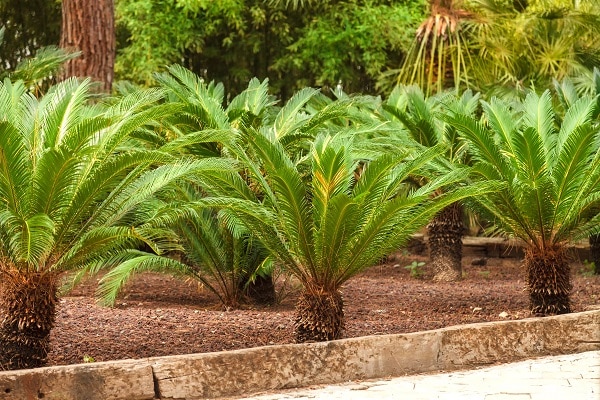
The Sago Palm is a beautiful and visually appealing plant; however, when it comes to your furry friends, it can be dangerous – even fatal! All parts of the Sago Palm are toxic to dogs, including its seeds, leaves, and stems. This type of toxicity is usually referred to as ‘sago palm poisoning’ or ‘cycad toxicity’.
Dogs that consume any part of the plant may experience signs such as vomiting, diarrhea, seizures, liver failure, and in some cases, death. Pet owners must be informed and aware of the risks associated with this type of plant in their home or yard to decide the best for their fur family.
Lilies

Many people love lilies for their sweet aroma, but did you know they are also one of the most toxic plants for your four-legged friends? While humans can enjoy its scent without harm, many species of lilies are extremely poisonous to dogs and cats, causing potentially fatal kidney failure. Ingestion of any part of this popular flower can cause severe vomiting, diarrhea, dehydration, lack of appetite, and lethargy.
Even minor exposure to pollen or water from the plant’s vase can result in toxicity, so it is always best to keep these flowers out of reach if a pet is present in the household. By understanding the risks and preventing contact between dogs and lilies, you can ensure that your furry friends will be safe from potential harm.
Foxglove
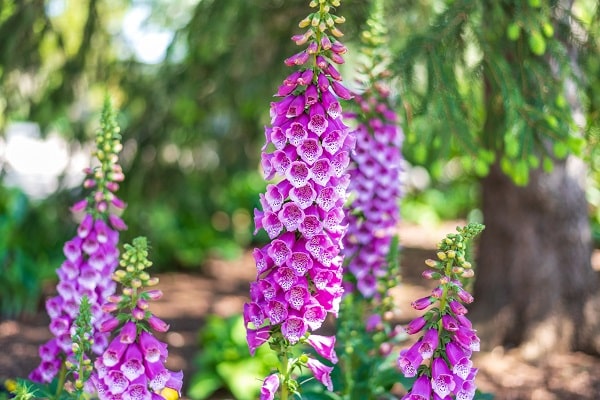
Foxglove is a common and pretty garden plant, striking with its purplish-pink bell-shaped flowers. However, it is a potentially deadly plant for dogs if ingested, as foxglove contains cardiac glycosides, which can cause arrhythmias and other severe ailments in dogs.
Symptoms of foxglove poisoning in dogs include decreased appetite, vomiting, labored breathing, weakness, and hypothermia. Affected animals neurologically may also show signs of confusion or seizures. If you suspect your pet has eaten foxglove, contact your veterinarian immediately – prompt treatment is key to preventing further health complications or even death.
Yew
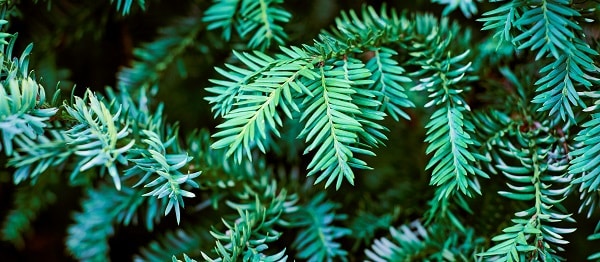
The Yew bush is a beautiful and hardy evergreen frequently found in landscape gardens and wild spaces. Unfortunately, several parts of the plant are deadly toxic to dogs if ingested. Although all species of Yew can be a danger, some plant varieties contain more toxins than others. This toxin, called Taxine, can cause agitation, vomiting, weakness, and seizure-like activity when ingested by dogs.
Death of the animal usually occurs due to cardiac arrest as Taxine acts on muscles around the heart to stop it from beating correctly. Pet owners need to be aware of any wild or landscaped Yews around their homes or area they frequent with their animals and take appropriate measures to prevent their pets from coming into contact with this potentially deadly plant.
Azaleas
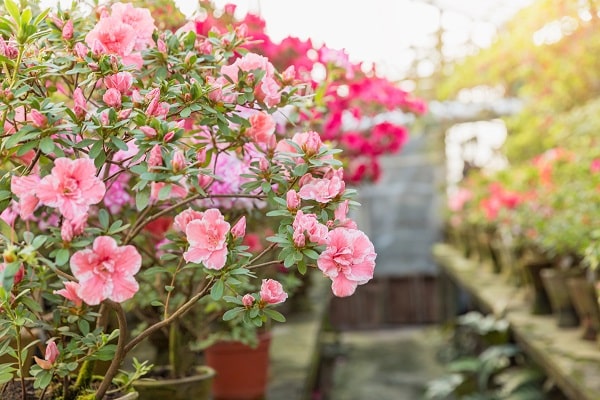
Azaleas are a popular type of flowering shrub, often used for landscape designs; however, people with pets need to be cautious about this plant. They are toxic to animals, especially dogs, and can cause immediate effects ranging from vomiting, diarrhea, excessive drooling, and abdominal pain.
Dogs that ingest the leaves or nectar of azaleas can also experience long-term health complications, including difficulty breathing, coma, and even death if not treated immediately.
Therefore it is best to keep these shrubs out of areas where they can be easily accessible to curious pets. Educate yourself on how to recognize different poisonous plants and make sure you know what’s in your outdoor environment to continue to enjoy blooming flowers without putting your furry friend at risk.
Oleander
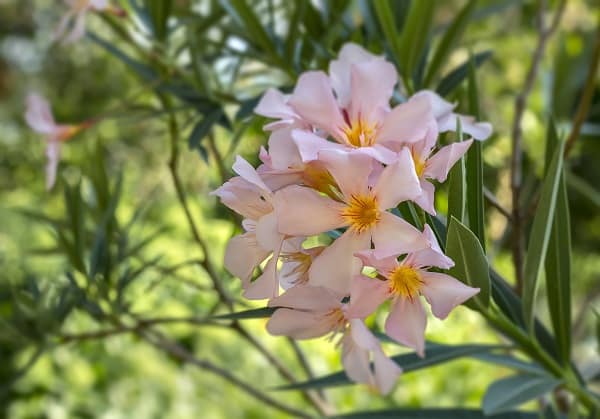
The Oleander is a beautiful flowering plant that, while attractive and fragrant, can be deadly to dogs. A chemical toxin known as oleandrin accumulates in the leaves and stems of this plant, and if a dog ingests any part of the plant, they can suffer from severe discomfort and even death.
Common symptoms include difficulty breathing, severe abdominal pain, vomiting, tremors, and seizures. Suppose a dog consumes any part of the Oleander. In that case, seeking immediate medical care from a veterinarian is essential as this type of poisoning can be deadly with delayed treatment. Thankfully most dogs stay away from the Oleander because of its bitter taste, but all dog owners need to be aware of the potential toxicity.
Tulips

The tulip is a beautiful and vibrant flower, but most people don’t know that it is poisonous to dogs. Tulips contain an irritant called tulipalin A and B, which can lead to the symptoms of mild digestive upset if consumed. Symptoms include vomiting, drooling, lethargy, and loss of appetite.
The severe reaction may lead to more serious problems such as heart irregularities or anemia.
Thankfully, these cases are rare, so if you are a dog owner who loves tulips, you don’t have to worry that your pet will get sick whenever they sniff the flowers. However, it is essential to note that if ingested in large enough amounts, caution should be taken.
What To Do If You Have One Of These Plants That Are Poisonous To Dogs?
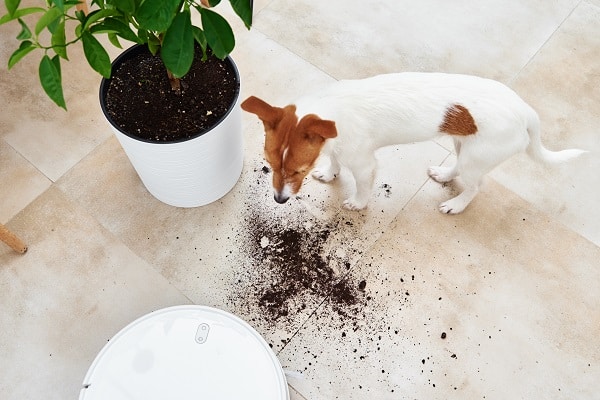
Having a pet can be a wonderfully fulfilling experience; however, ensuring that animals are safe and healthy is vital. The best way to protect your pup is to remove any dangerous plants from your home, no matter how beautiful they look or smell. If you have plants in your home that are poisonous to dogs, then taking proper precautions is essential. It may also be worth researching what common houseplants can trigger dog allergies.
If you can’t remove the plant from the premises, place it somewhere inaccessible so your pup cannot get near it. Ensure regular checks around the garden and the house for potentially dangerous plants. To further safeguard pets, create an area outdoors dedicated to dog-safe which can be properly fenced off and free of toxic vegetation. Remember, by taking these simple steps, you will help guarantee many years of happy togetherness with your beloved four-legged friend!
Keep Your Dog Safe From These Plants That Are Poisonous To Dogs
Whether you are an experienced pet owner or a first-time dog parent, it is essential to remember the potential dangers of plants that are poisonous to dogs. Taking proactive steps to prevent contact with these plants can be life-saving and will help protect your pup from harm. Take time to research which common houseplants may be harmful, and always keep an eye on your furry friend when exploring outdoors. Taking these precautions can help ensure a lifetime of love and companionship with your pup!


